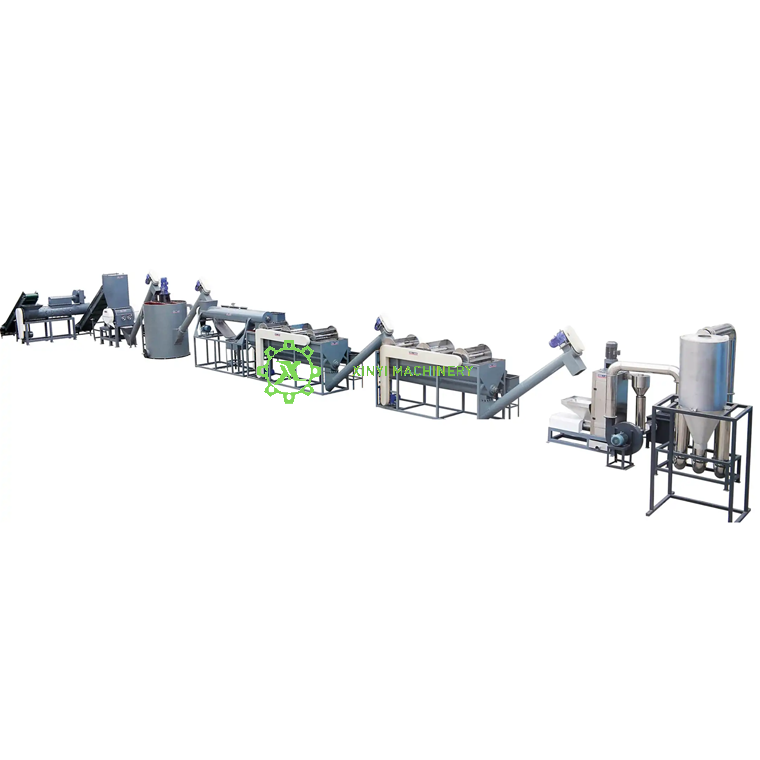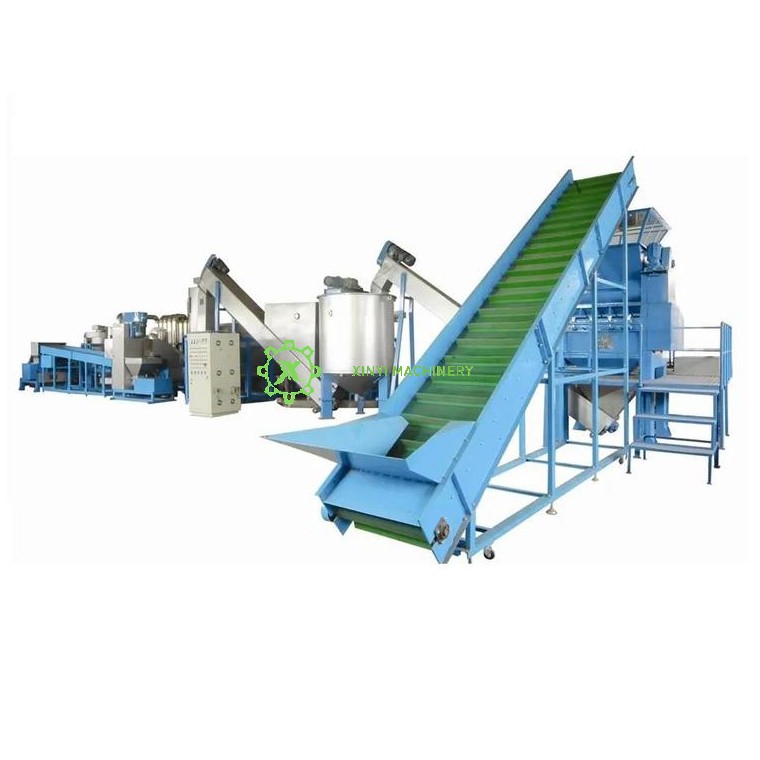The choice between cold washing (ambient to 40°C) and hot washing (60–85°C) in PET recycling significantly impacts cleaning efficiency, operational costs, and final flake quality. Here's a detailed comparison:
Key Differences:
o Cleaning Effectiveness:
o Hot Washing:
§ Superior at removing stubborn contaminants (grease, oils, adhesives, food residues).
§ Heat softens labels/glues, improving detachment.
§ Kills bacteria/mold, ensuring hygienic flakes (critical for food-contact PET).
o Cold Washing:
§ Less effective against oils and adhesives.
§ Relies more on chemical detergents and mechanical friction.
§ Higher risk of microbial growth in wash water.
o Chemical Usage:
o Hot Washing:
§ Lower chemical demand – heat enhances detergent effectiveness.
o Cold Washing:
§ Requires stronger/more chemicals to compensate for lack of heat.
§ May need specialized cold-water enzymes or surfactants.
o Energy & Costs:
o Hot Washing:
§ High energy consumption (20–40% of total recycling energy) for water heating.
§ Higher operational costs.
o Cold Washing:
§ Lower energy costs (no heating required).
§ Potential savings offset by increased chemical expenses.
o Flake Quality:
o Hot Washing:
§ Produces higher-purity flakes suitable for food-grade rPET.
§ Reduces residual moisture (easier drying).
o Cold Washing:
§ Risk of contaminants adhering to flakes, limiting end-use applications.
§ Flakes may retain more moisture, requiring intensive drying.
o Environmental Impact:
o Hot Washing: Higher carbon footprint (energy use).
o Cold Washing: Potential for chemical runoff; relies on eco-friendly detergents.
Decision Factors:
Factor | Hot Washing Preferred When... | Cold Washing Preferred When... |
Input Contamination | Heavy oils, adhesives, food residues | Light contamination (e.g., water bottles) |
Target Application | Food-grade rPET | Non-food (fibers, strapping) |
Energy Costs | Low energy costs/abundant renewables | High energy costs |
Water Treatment | Advanced treatment available | Limited treatment capabilities |
Practical Insight:
Many modern plants use a hybrid approach: pre-rinsing with cold water to remove loose debris, followed by hot washing for deep cleaning. This balances cost and quality while minimizing thermal degradation risks (PET softens above 70°C).
Always test your feedstock – heavily soiled PET (e.g., industrial containers) often necessitates hot washing, while post-consumer bottles may tolerate cold washing with optimized chemistry. The choice ultimately hinges on end-product requirements and cost constraints.





